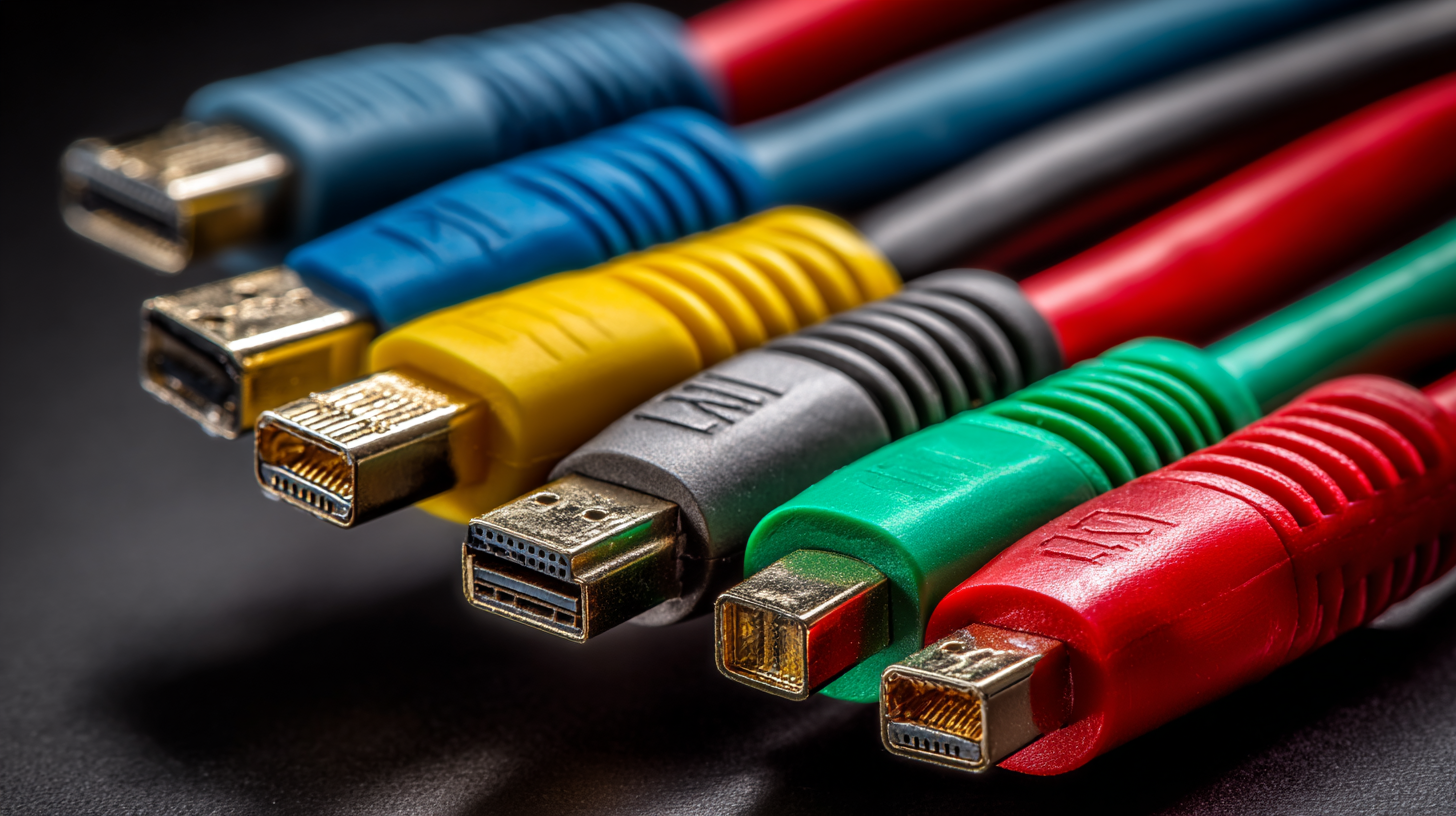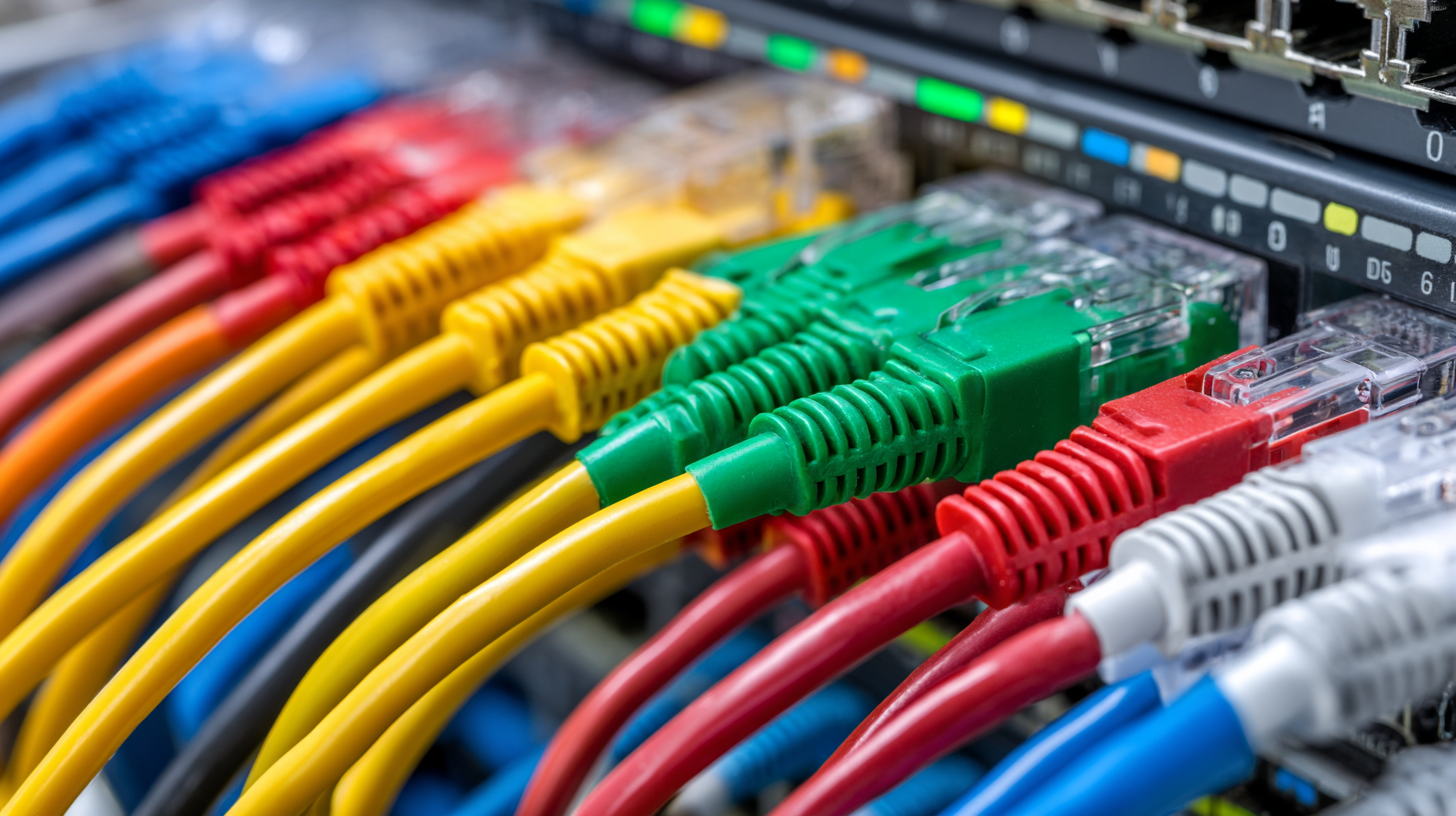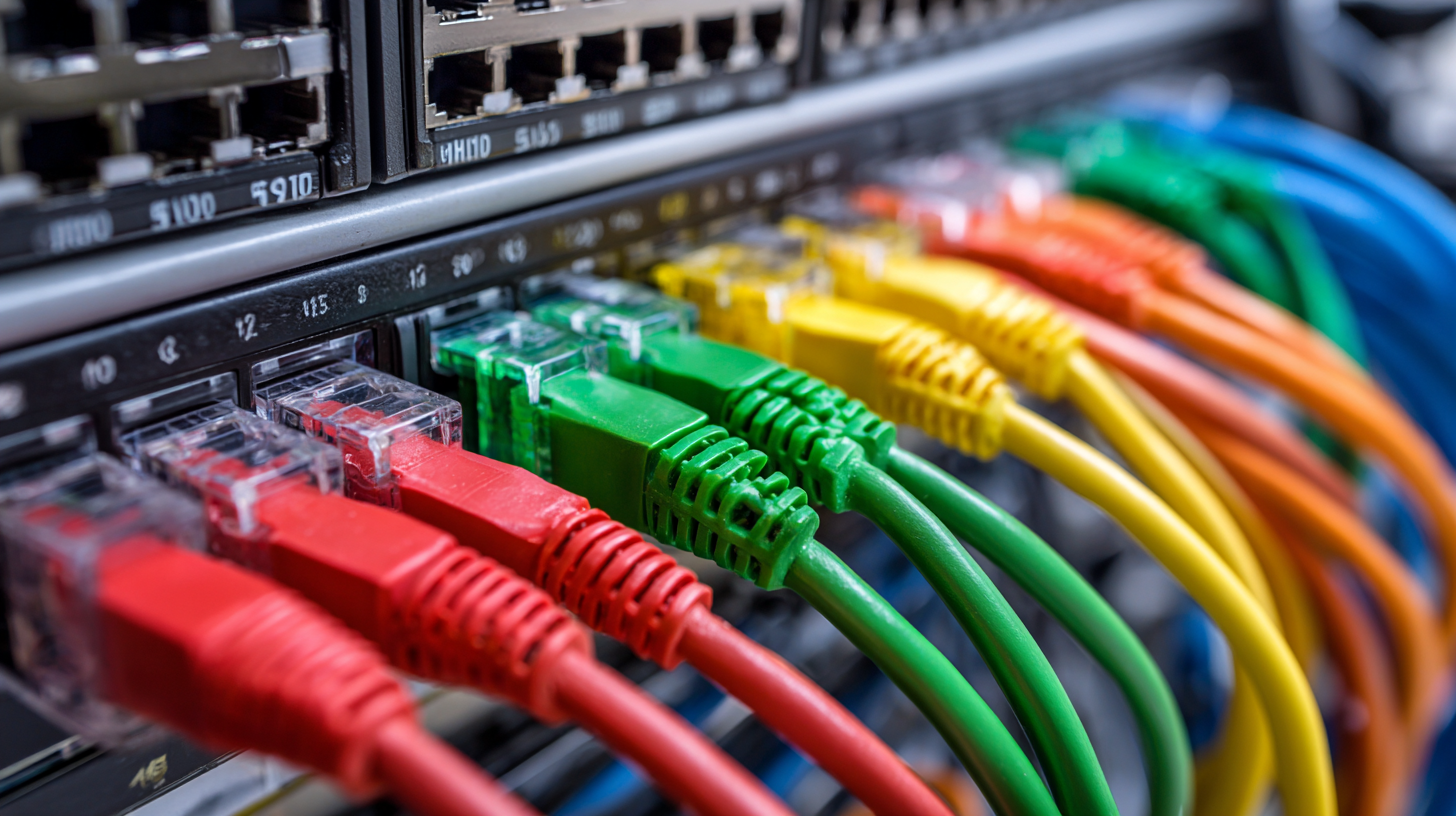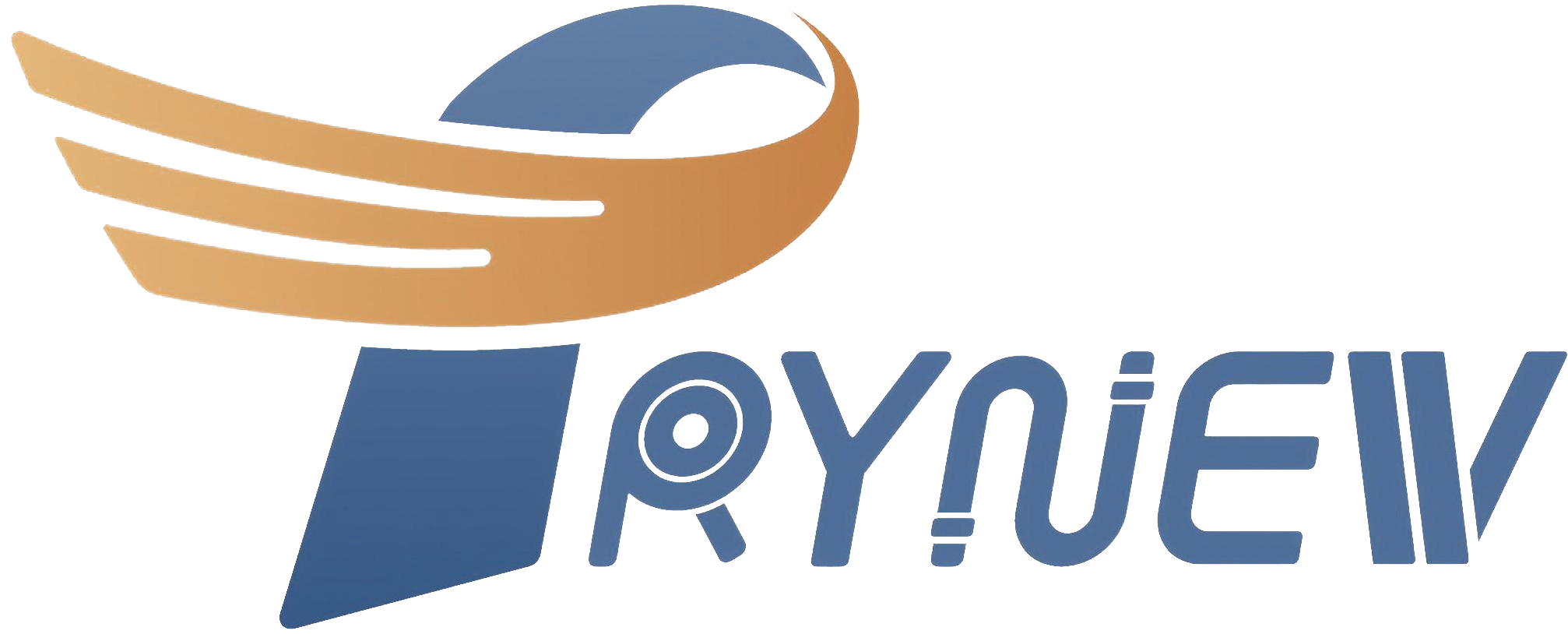In today's increasingly interconnected world, the demand for reliable and high-performance communication systems is greater than ever. As businesses and consumers alike look to optimize their network performance, the choice of network cables has become a pivotal factor in achieving efficiency and speed. According to market reports, the global network cable market is projected to reach $12 billion by 2025, driven by the rapid expansion of data centers and the rise in internet users worldwide. This growing importance is underscored by the variety of alternatives available, from traditional Ethernet cables to emerging fiber optic solutions. In this blog, we will provide a comprehensive comparison of the best network cables currently on the market, enabling global buyers to make informed decisions that will enhance their network infrastructure and support their digital growth.

As we delve into the evolution of network cable technology from a 2025 perspective, it’s essential to acknowledge the rapid advancements that have redefined data transmission. According to the “2023 Global Network Cable Market Report,” the demand for high-speed data transfer solutions has surged by over 15% annually, propelled by the proliferation of cloud computing and IoT devices. This surge is primarily driving the development of cables such as Cat 8 and fiber optic solutions, which provide speeds exceeding 40 Gbps.
Recent studies indicate that fiber optic cables are expected to capture around 40% of the market share by 2025, as their bandwidth capabilities outstrip traditional copper cables. This switch is evident in major data center upgrades, where reports show that deploying fiber solutions reduces latency and enhances signal integrity. As industries increasingly rely on high-speed connectivity, the emphasis on innovative materials and construction techniques becomes paramount — with companies investing significantly in R&D to refine their offerings. The future of network cables is not just about speed; it’s also about harnessing technology to support a data-driven world seamlessly.
When considering network cables for various applications, understanding the differences between Ethernet standards is essential for making informed purchasing decisions. The Cat5e cable, which supports speeds up to 1 Gbps and bandwidths of 100 MHz, remains a popular choice for basic networking needs. However, studies from the IEEE indicate that while Cat5e can handle gigabit speeds, it may not be the best option for future-proofing in high-demand environments.
Shifting to Cat6 cables presents a significant advantage, enabling data transfer speeds up to 10 Gbps over shorter distances of up to 55 meters, with a bandwidth capacity of 250 MHz. According to a report from the International Telecommunication Union, the growing demands for higher internet speeds in homes and businesses are propelling the adoption of Cat6 cables by over 30% annually. As technology progresses towards faster data transmission rates, cables such as Cat6a, with enhanced performance up to 10 Gbps for distances of 100 meters and bandwidths of 500 MHz, are increasingly favored. This trend highlights the need for global buyers to consider not only current requirements but also future network expansions as they select Ethernet cables.
In the rapidly evolving landscape of network technology, understanding the material differences between copper and fiber optic cables is essential for making informed purchasing decisions in 2025. Copper, a traditional choice for many years, is renowned for its durability and ease of installation. It is capable of delivering high data transfer rates over short distances, making it suitable for localized networking needs. However, as data demands grow, its limitations become clear; copper cables are more susceptible to electromagnetic interference and signal degradation over longer distances.
On the other hand, fiber optics have emerged as the technology of choice for high-performance networking. Composed of thin strands of glass or plastic, fiber optic cables transmit data as light pulses rather than electrical signals, resulting in significantly higher speeds and bandwidth capabilities. They are also immune to electromagnetic interference, allowing for clear signal transmission even over long distances. As global connectivity continues to expand, the advantages of fiber optics are likely to outweigh the traditional benefits of copper, providing a clearer path toward the future of networking solutions. The choice between the two materials will significantly impact performance and efficiency in the coming years.
| Cable Type | Material | Max Speed (Gbps) | Max Distance (m) | Cost per Meter ($) | Use Case |
|---|---|---|---|---|---|
| Cat 6a | Copper | 10 | 100 | 0.30 | Home/Office Networking |
| Cat 7 | Copper | 10 | 100 | 0.50 | High-Speed Data Centers |
| Single-mode Fiber | Fiber Optics | 100 | 10000 | 0.80 | Long-Distance Communications |
| Multi-mode Fiber | Fiber Optics | 10 | 300 | 0.60 | Data Centers and LAN |
| Cat 5e | Copper | 1 | 100 | 0.25 | Basic Home Networking |
The rapid advancements in network cable technology are reshaping how we approach data transmission speeds, especially in light of the burgeoning demand for AI data centers. As these specialized facilities grow, the necessity for high-speed, reliable connectivity becomes paramount. Fiber optic cables stand out due to their ability to support high-bandwidth and low-latency transmission, making them essential for tasks such as processing large datasets or hosting AI algorithms. With projections indicating that the global fiber optic cable market is poised to reach significant sales figures, it is apparent that buyers must prioritize cables that can accommodate the increasing data requirements of modern applications.

Moreover, comparing fixed fiber optic broadband to mobile WiFi reveals critical distinctions that can influence network cable selection. While mobile WiFi provides unparalleled convenience, it cannot match the stability and performance offered by fiber optics. This trade-off is particularly relevant for industries and consumers who rely on consistent and rapid data transfer speeds. As global connectivity challenges arise, particularly influenced by geopolitical issues surrounding undersea cables, the importance of selecting the right network cables cannot be overstated. It impacts not just personal or organizational internet usage but also shapes the landscape of global data transmission and communication infrastructure.
When considering network cables for future-proofing your infrastructure, global buyers need to assess several key factors. The rapid advancement in technology necessitates selecting cables that can handle increasing data speeds and bandwidths. High-quality cables, such as Cat6a or Cat7, not only support higher transmission speeds but also come equipped with better shielding, minimizing interference and ensuring a stable connection.

Tips for choosing the right network cable include evaluating your specific needs, such as the intended use and distance of the cable. For instance, if you are planning to set up a home office or a small business network, opting for Cat6 cables can offer a solid balance of performance and cost. Additionally, ensure compatibility with existing hardware and future upgrades to avoid obsolescence.
Another critical consideration is the certification of the cables. Look for products that comply with international standards, as this ensures quality and reliability in the long run. Investing in well-certified cables can provide peace of mind and better network performance as your demands evolve over time.
